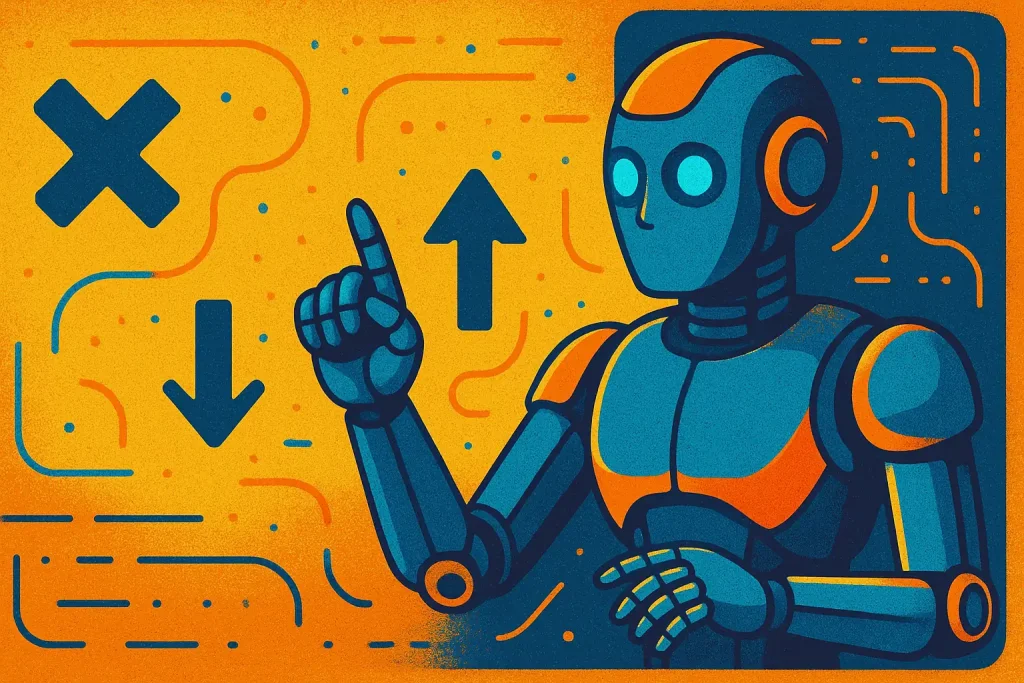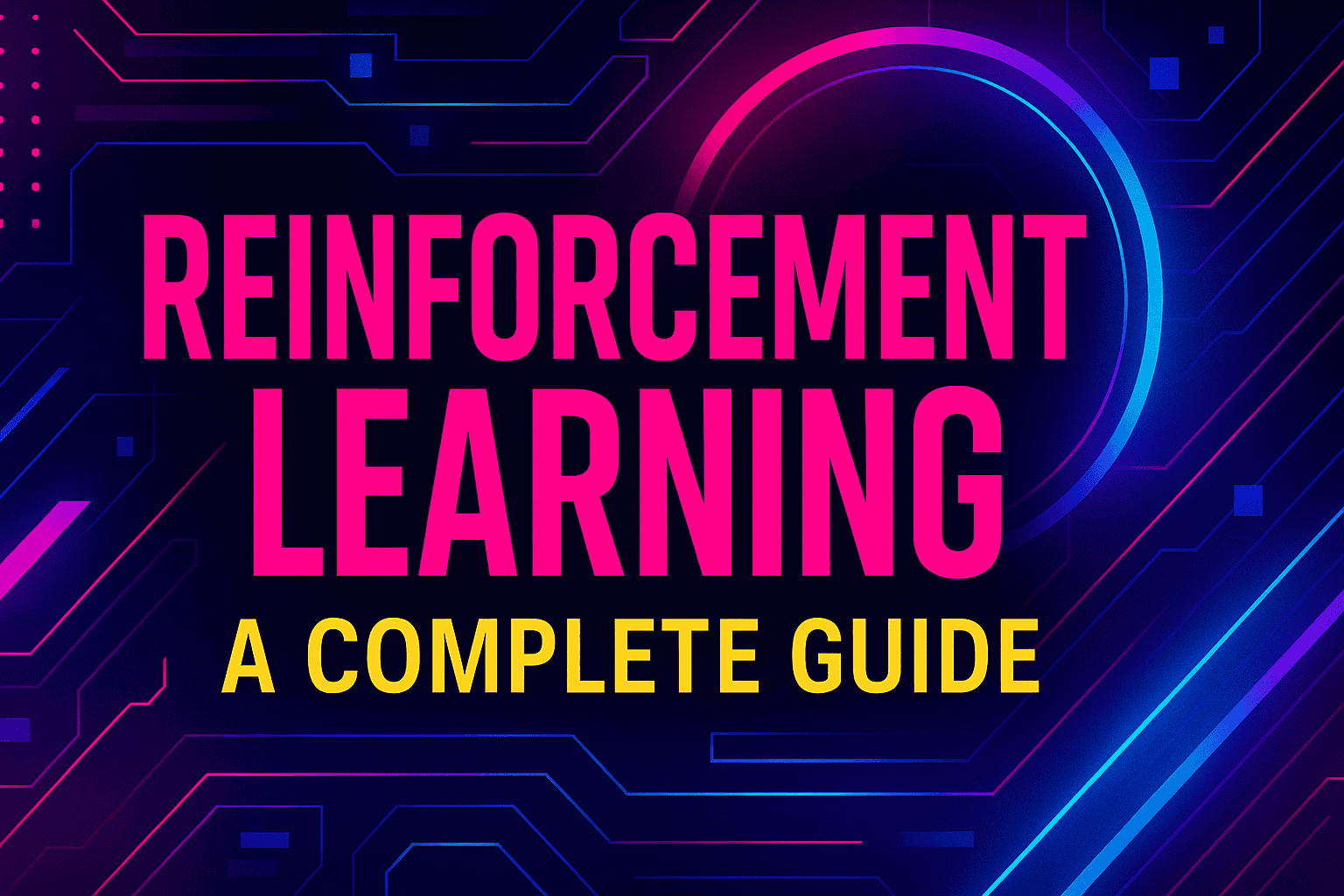Many people new to artificial intelligence ask, What is Reinforcement Learning? This question is important because Reinforcement Learning (RL) has become a central concept in AI development. It powers systems that learn by trial and error, improving performance without direct programming.
iT combines elements of decision-making, optimization, and feedback loops. Unlike supervised learning, which depends on labeled data, RL thrives on interaction with environments. This approach makes it useful in industries ranging from robotics to blockchain-based trading systems.
For researchers and professionals, understanding Reinforcement Learning helps clarify how machines adapt to complex problems. In artificial intelligence, RL plays a vital role in enabling dynamic decision-making. By exploring its definition, history, and applications, readers can better grasp why RL is considered a revolutionary concept in the AI landscape.
What is Reinforcement Learning
Reinforcement Learning is a machine learning paradigm within artificial intelligence where an agent learns by interacting with an environment. The agent performs actions, receives rewards or penalties, and updates its strategy accordingly. Over time, the agent seeks to maximize long-term rewards by refining its decisions.
To simplify, think of it as a loop: action → reward/penalty → updated knowledge → better future action. This loop defines how its Learning models adapt and improve performance.
In artificial intelligence discussions, synonyms like “trial-and-error learning,” “adaptive learning,” and “policy optimization” often appear. All point to the same idea: machines learning from interaction rather than static datasets.
Reinforcement Learning differs from supervised and unsupervised learning. Supervised methods rely on labeled inputs, while unsupervised approaches detect patterns in unlabeled data. RL focuses on continuous improvement through exploration and exploitation of strategies.
Understanding this definition is crucial for those working with blockchain, digital currency, or even crypto wallet security. AI models powered by RL can help optimize trading decisions, enhance crypto account security, and support automated strategies in dynamic markets. Furthermore, RL encourages innovation in decentralized applications, enabling smarter contracts, automated fraud detection, and dynamic asset allocation. By combining trial-and-error learning with blockchain insights, RL can create resilient systems that adapt to unpredictable conditions, giving traders and developers more reliable tools to manage crypto accounts effectively.
Detailed Explanation

IIt operates on three main components: the agent, the environment, and the reward system.
The agent is the learner or decision-maker.
The environment represents the system in which the agent operates.
The reward system gives feedback based on the agent’s actions, shaping its learning process.
A central concept is the policy, which is the strategy the agent follows to choose actions. Policies evolve as the agent learns from rewards and penalties. Another concept is the value function, which estimates the expected rewards for a sequence of actions.
It also incorporates exploration and exploitation. Exploration involves trying new actions to discover better outcomes, while exploitation uses known strategies to maximize rewards. Balancing these two is critical for effective learning.
Examples include:
- Autonomous vehicles: Cars learn to navigate roads safely.
- Trading algorithms: AI agents adjust strategies in response to blockchain-based trading signals.
- Robotics: Robots learn to perform tasks like picking and placing objects.
- Digital assistants: AI improves personalized recommendations by interacting with users.
Through these mechanisms, Reinforcement Learning provides AI with adaptability and resilience. It transforms artificial intelligence from rule-based programming into systems capable of dynamic and intelligent behavior. Moreover, RL’s versatility means it can be applied in gaming, healthcare, and even managing crypto wallets. For instance, RL-driven algorithms can detect anomalies in crypto accounts, strengthen digital currency security, and refine real-time trading strategies. These applications illustrate how the agent-environment-reward framework extends beyond theory, shaping innovations in blockchain, finance, and everyday AI-driven tools.
History or Origin
The history of Reinforcement Learning stretches back to psychology and behavioral science. Early concepts emerged from experiments in behaviorism, where animals learned tasks through rewards and punishments. Psychologists like B.F. Skinner studied operant conditioning, which became the foundation for RL principles.
In artificial intelligence, the 1950s and 1960s marked the beginning of computational Reinforcement Learning. Researchers created early algorithms inspired by trial-and-error behavior. The field advanced significantly in the 1980s with the development of Q-learning and temporal difference learning, two cornerstone methods still widely used today.
The 2000s brought deep learning into the equation. Combining RL with neural networks created Deep Reinforcement Learning, which enabled breakthroughs such as AlphaGo, the AI system by DeepMind that defeated human champions in the game of Go.
These milestones highlight the evolution from psychology to artificial intelligence. Now plays a role in industries like trading, autonomous robotics, and blockchain. Understanding its origin gives insight into why it remains central in discussions about AI development.
Applications or Uses
Reinforcement Learning has many applications in artificial intelligence.
Robotics: Robots use RL to learn tasks such as navigation, assembly, or medical assistance. Their ability to adapt in real time is powered by trial-and-error learning.
Gaming: AI agents trained with RL beat human champions in chess, Go, and video games. These successes highlight its problem-solving power.
Finance and Trading: RL models enhance decision-making in cryptocurrency trading. By analyzing blockchain data, they adapt to volatile conditions and manage crypto wallets effectively.
Healthcare: AI systems learn to optimize treatment plans by balancing risks and outcomes.
Smart systems: Reinforcement Learning supports energy management in smart grids and autonomous vehicle operations.
Digital assistants: Personalization features, like music or shopping recommendations, are often powered by RL.
In cryptocurrency specifically, Reinforcement Learning is applied in portfolio balancing, blockchain fraud detection, and risk management. Crypto account managers may use RL-driven systems to automate decisions during trading surges. This reduces risks in volatile digital currency environments.
The versatility of RL ensures its role continues to expand. Whether in predictive analytics, enhancing decentralized applications, or improving blockchain scalability, RL stands at the center of future AI growth. Its ability to merge adaptability with decision-making makes it a key driver of innovation across industries, entertainment, blockchain technology, or global finance, its methods redefine artificial intelligence.
Conclusion
Reinforcement Learning stands as one of the most transformative concepts in artificial intelligence. By answering What is Reinforcement Learning, we explored how agents learn through interaction, rewards, and continuous improvement. Unlike static methods, RL thrives in dynamic environments where adaptability is essential. The importance of Reinforcement Learning lies in its ability to merge decision-making with learning. For professionals, it means more efficient AI systems. For researchers, it offers endless opportunities for innovation. And for industries, it delivers competitive advantages through intelligent automation.
Resources
DeepMind: Reinforcement Learning Explained
OpenAI: Research on Reinforcement Learning
MIT: Introduction to Reinforcement Learning
Stanford University: CS234 Reinforcement Learning
Analytics Vidhya: Comprehensive Guide to Reinforcement Learning

